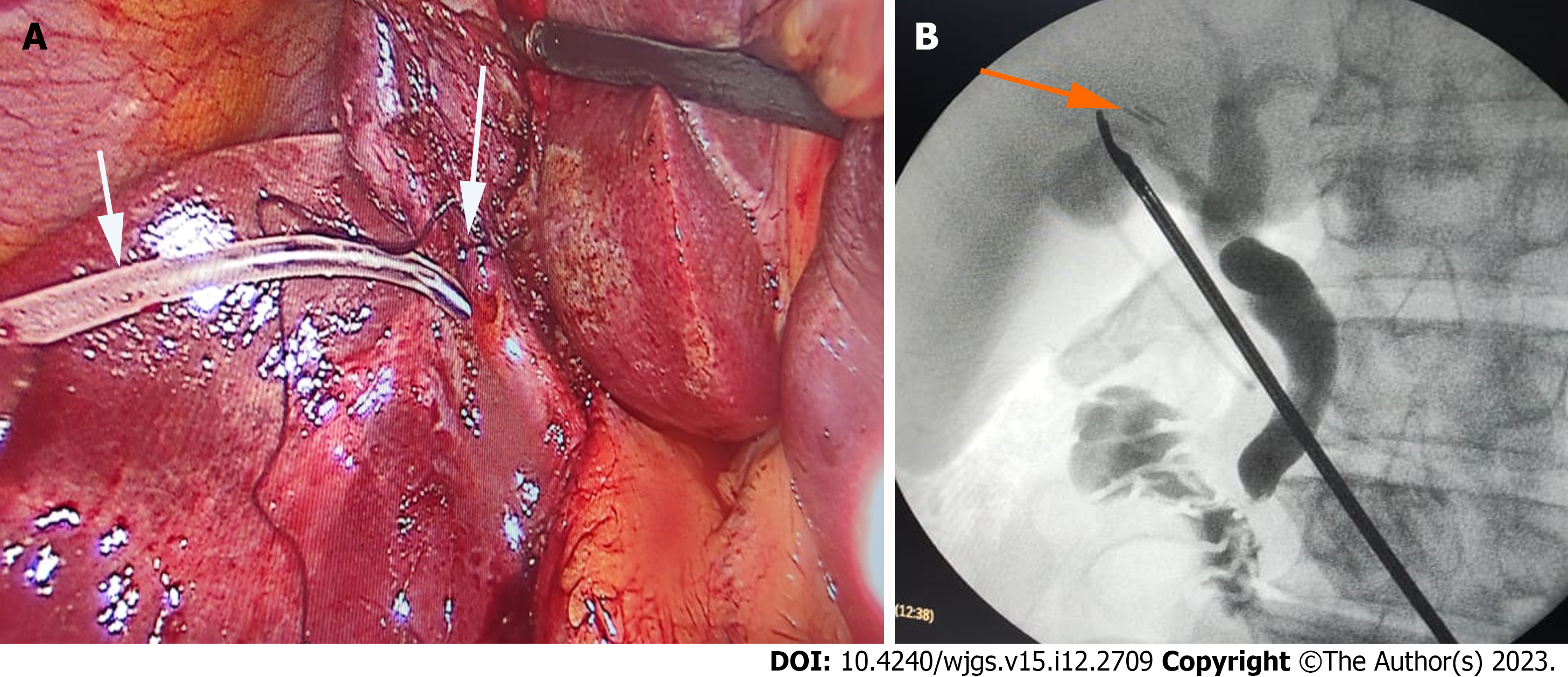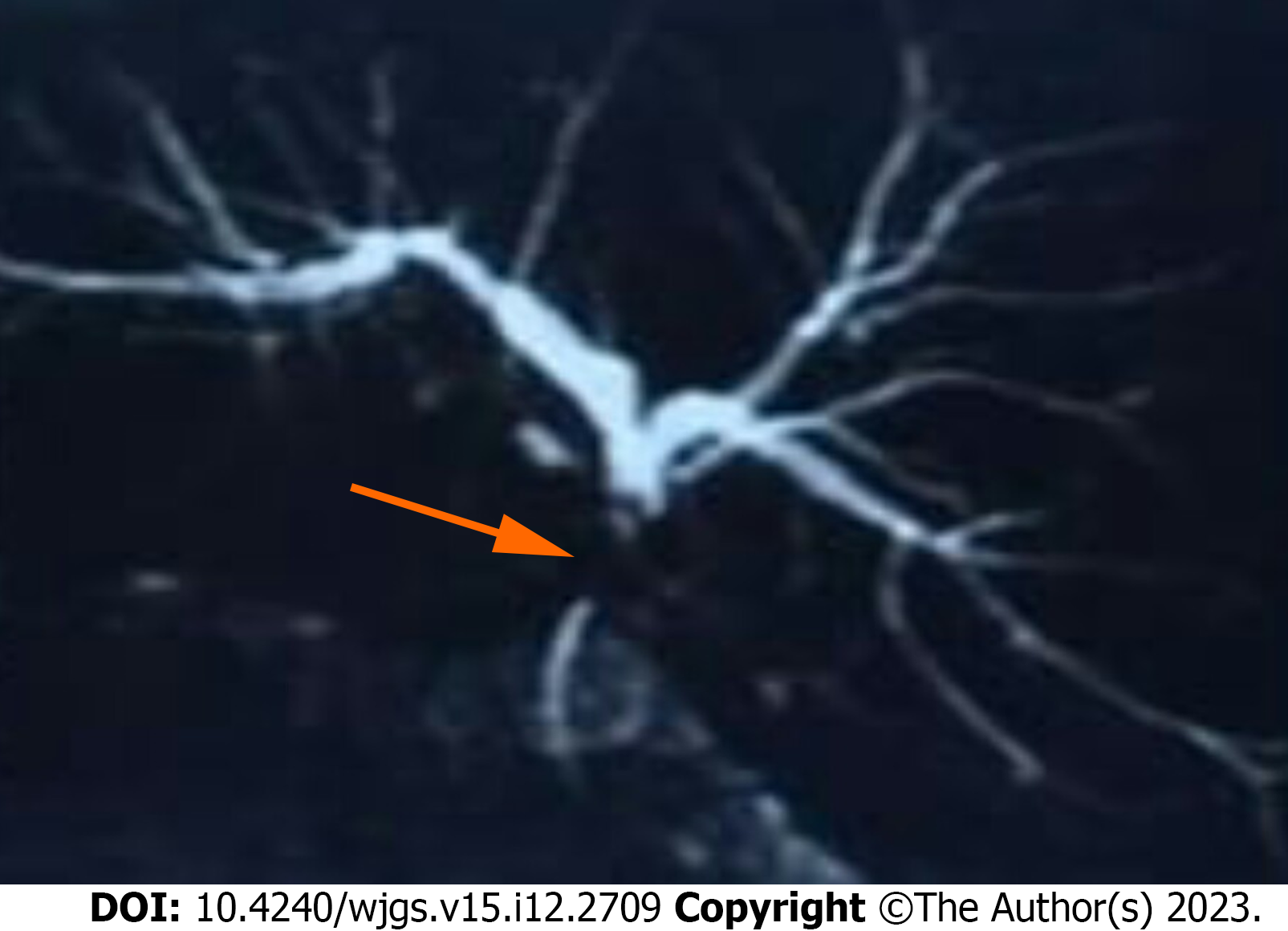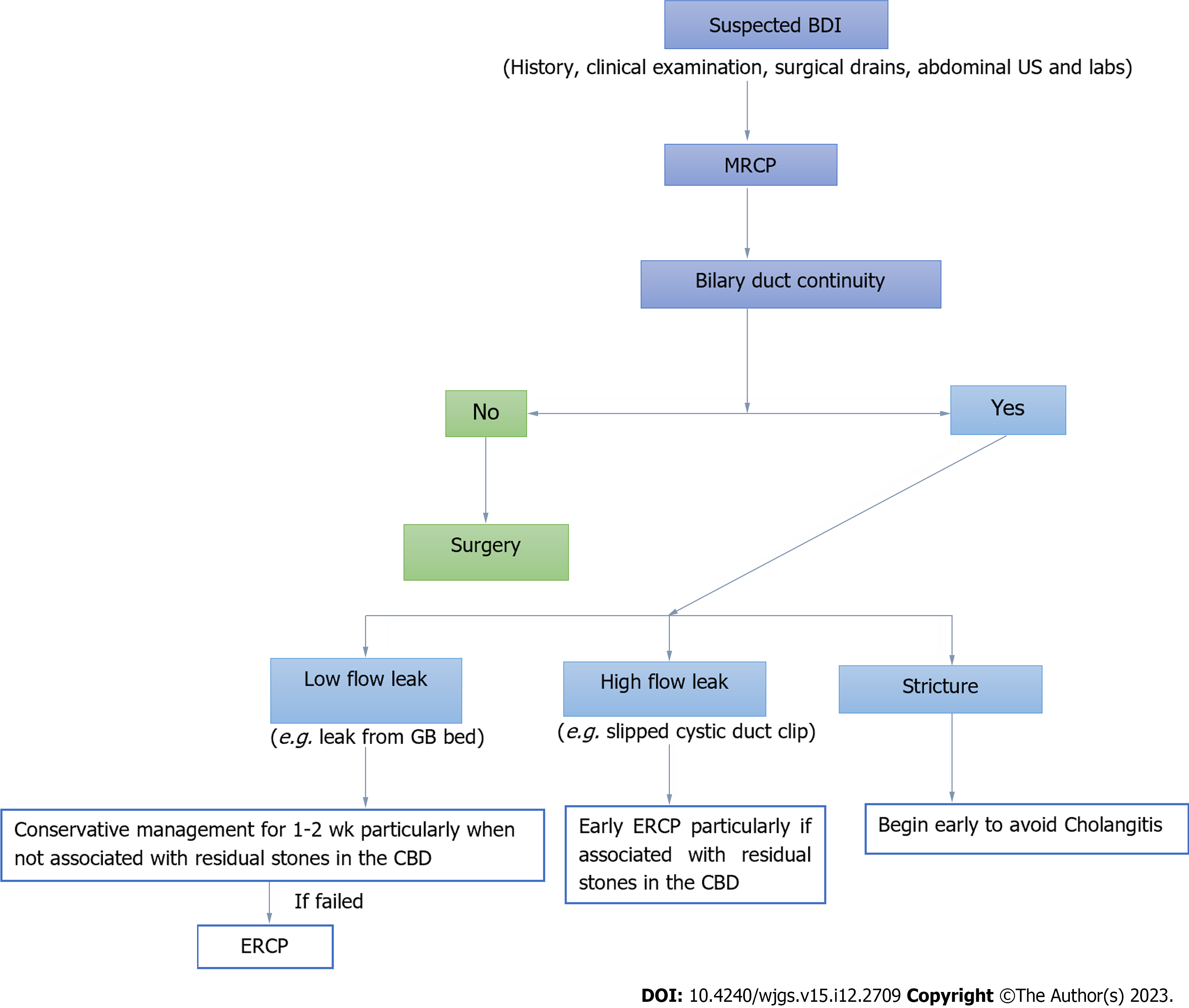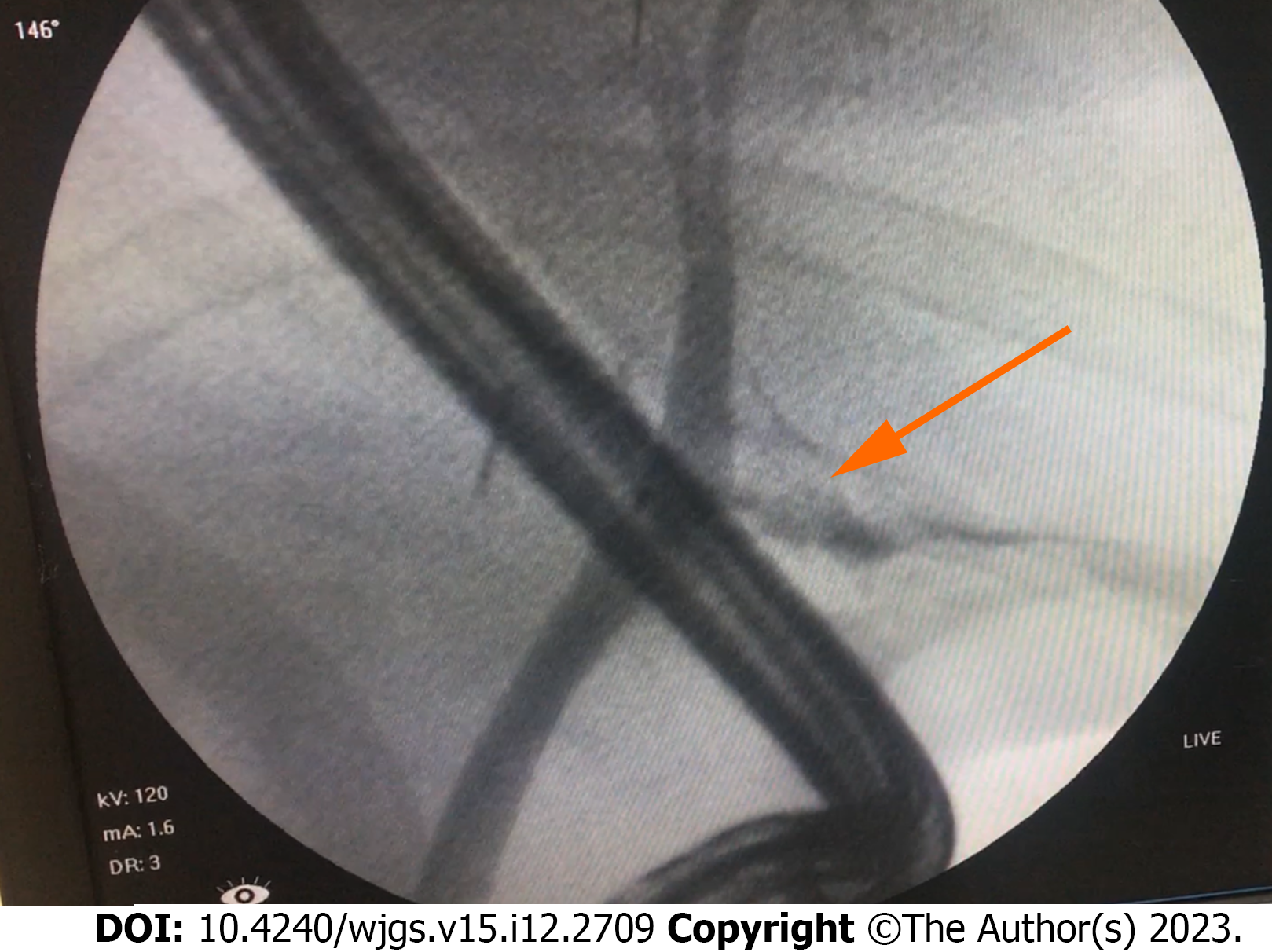Copyright
©The Author(s) 2023.
World J Gastrointest Surg. Dec 27, 2023; 15(12): 2709-2718
Published online Dec 27, 2023. doi: 10.4240/wjgs.v15.i12.2709
Published online Dec 27, 2023. doi: 10.4240/wjgs.v15.i12.2709
Figure 1 Intraoperative Cholangiogram.
The preferred intraoperative imaging is cholangiogram. A: Laparscopic view showing a catheter (short arrow) for the dye injection passing through the bile duct (long arrow); B: Opacified bile ducts. Note the clips at the cystic duct stump (arrow).
Figure 2 Magnetic Resonance Cholangio-Pancreatography.
Magnetic Resonance Cholangio-Pancreatography image showing loss of signal in the lower common hepatic and upper common bile duct (less than 10mm from biliary confluence) consistent with complete ligation of the bile duct (Strasberg classification E2).
Figure 3 Surgical management algorithm.
The type of surgical management depends mainly on the timing of detection of the injuries as well as the availability of surgical expertise in management of these injuries as shown in the algorithm.
Figure 4 Suggested algorithm for optimal timing of Endoscopic Retrograde Cholangio-Pancreatography in the management of bile duct injuries.
Cases with suspected bile duct injuries should be thoroughly evaluated with meticulous history taking, clinical examination with special attention for the surgical drains. Abdominal ultrasonography usually is the first non-invasive diagnostic modality together with laboratory investigations. Those patients are preferably examined by MRCP before the decision to proceed for Endoscopic Retrograde Cholangio-Pancreatography (ERCP). ERCP should no be more done as a diagnostic technique. Patients should go to ERCP only if any degree of bile cut continuity is detected during the Magnetic Resonance Cholangio-Pancreatography examination. BDI: Bile duct injuries; MRCP: Magnetic Resonance Cholangio-Pancreatography; ERCP: Endoscopic Retrograde Cholangio-Pancreatography; US: Ultrasonography; GB: Gallbladder; CBD: Common bile duct.
Figure 5 Endoscopic Retrograde Cholangio-Pancreatography.
Cholangiogram showing complete cut-off of the biliary continuity is a 43 years-old lady after laparoscopic cholecystectomy.
Figure 6 Cystic dust stump leak.
A case of 27-years old lady who was operated by laparoscopic cholecystectomy and presented by high-flow bile leak due to slipped cystic duct stump clip (note the flow and absence of the clip).
- Citation: Emara MH, Ahmed MH, Radwan MI, Emara EH, Basheer M, Ali A, Elfert AA. Post-cholecystectomy iatrogenic bile duct injuries: Emerging role for endoscopic management. World J Gastrointest Surg 2023; 15(12): 2709-2718
- URL: https://www.wjgnet.com/1948-9366/full/v15/i12/2709.htm
- DOI: https://dx.doi.org/10.4240/wjgs.v15.i12.2709














